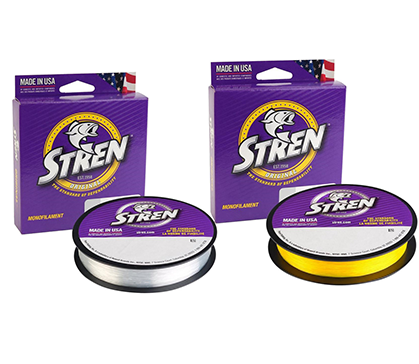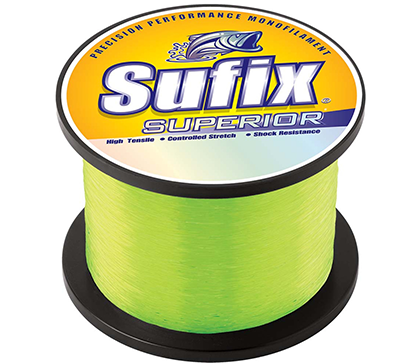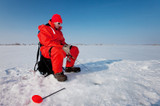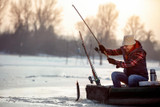Best Monofilament Fishing Line
Selecting the best monofilament fishing line is an important decision for any angler. Monofilament is a favorite among fishing enthusiasts because it’s versatile, budget-friendly, and simple to handle. Whether casting for trout in clear streams or reeling in bass from dense vegetation, the right monofilament line can improve your success on the water.
By understanding the various options and features available, you can select the best monofilament fishing line for your specific needs and conditions. Explore why monofilament is an excellent choice for all types of fishing adventures.
What is a Monofilament Fishing Line?
A monofilament fishing line is made from a single, continuous material, typically nylon. Some brands include additives or coatings to the line to improve underwater visibility, UV resistance, or increase knot strength.
Monofilament lines offer several advantages over other fishing lines, such as braided and fluorocarbon. Monofilament is known for its strength, flexibility, and affordability, making it popular among anglers of all skill levels.
Monofilament is generally more visible in the water than braided lines, which can be advantageous in certain fishing situations. It also has a higher elasticity, which can help absorb the shock of a fish’s initial strike and prevent the line from breaking. Monofilament is also typically less expensive than braided or fluorocarbon lines, making it an economical option for anglers on a tight budget.
Eight Factors to Consider When Buying Monofilament Fishing Line
Once you’ve decided on monofilament, several essential factors must be considered when selecting the ideal line for your needs.
- Strength and durability. Monofilament fishing lines are rated by their pound test, which indicates the force the line can withstand before breaking. Higher pound tests offer greater strength and durability, making them suitable for targeting larger fish species like walleye, tuna, and catfish or fishing in areas with heavy cover or structure.
However, balancing strength and line diameter is essential, as thicker lines can negatively impact casting distance and sensitivity. While a 20-pound test line might be perfect for bass fishing in dense vegetation, it could reduce casting performance if you target smaller fish in open water.
- Flexibility and stretch. Monofilament lines are known for their moderate stretch, which can be advantageous in specific situations. The stretch helps absorb the shock of a fish’s strike, reducing the likelihood of the line breaking. However, too much stretch can make it difficult to set the hook effectively.
The level of flexibility and stretch can vary between different monofilament lines. For example, a line with more stretch might be better for trolling, where sudden, powerful strikes are common, while a stiffer line might be preferable for finesse techniques like drop shotting or ned rigging that require more sensitivity and immediate hook sets.
- Diameter. The diameter of the line plays an essential role in its visibility and casting performance. Thinner lines are less visible in the water, making them ideal for clear conditions or when fishing for wary fish. However, thicker lines provide better casting distance and are more suitable for windy conditions or when fishing with heavier lures or baits.
Matching the line diameter to your reel and fishing conditions is critical for optimal performance. A 4-pound test line might be perfect for trout fishing in clear streams, while a 12-pound test line could be better suited for surf fishing, where longer casts and heavier weights are necessary.
- Knot strength. Secure knot connections are essential for maintaining the integrity of your line and ensuring successful fish-fighting. Monofilament lines vary in their knot strength, with some lines being more prone to slippage or weakening at the knot.
Consider lines with high knot strength ratings to ensure your connections remain strong and reliable. For instance, the Palomar knot is often recommended for monofilament because of its high strength and simplicity, maintaining the line’s integrity even under heavy strain.
- Sensitivity. While monofilament lines are generally less sensitive than braided or fluorocarbon lines, some are designed to provide better sensitivity and feedback.
This allows you to detect subtle bites and feel underwater structures more effectively. Sensitivity is vital for techniques like jigging, where feeling the slightest nibble can make the difference between a catch and a miss.
- UV resistance. Prolonged exposure to the sun’s ultraviolet (UV) rays can cause monofilament lines to weaken and become brittle over time. Lines with superior UV resistance offer increased longevity and durability, ensuring consistent performance throughout their lifespan.
For example, anglers who frequently fish in sunny, open water conditions should prioritize UV-resistant lines to avoid frequent replacements and maintain line strength.
- Abrasion resistance. Abrasion resistance is required for fishing in environments with rough structures like rocks, coral, or heavy vegetation. Lines with high abrasion resistance can withstand contact with these elements without compromising their strength.
This feature is particularly important for saltwater fishing, where abrasive structures are more common, and the line’s durability is constantly tested.
- Memory. Line memory refers to the line’s tendency to retain the shape of the spool, leading to coils and tangles during casting. Low-memory lines are preferable as they offer smoother casting and reduced tangles.
Lines with higher memory may reduce casting accuracy and distance. Anglers should look for monofilament lines that advertise low memory for better handling and performance.
Five Top Monofilament Fishing Lines
At FISH307, we pride ourselves on offering a comprehensive selection of the best monofilament fishing lines to suit every angler’s needs. Whether you’re a seasoned pro or a weekend warrior, our collection offers various techniques and water condition options.
Triple Fish Monofilament Line

This European-made line offers high knot strength and good abrasion resistance, making it a reliable choice for various fishing conditions. With easy casting properties and availability in clear, camo, and pink colors, Triple Fish monofilament provides versatility and value.
Its multi-purpose design excels in bottom fishing, wreck fishing, and shoreline casting. While it may not match the durability of premium lines, its affordability makes it an excellent choice for rookies looking for dependable performance without breaking the bank.
Berkley Trilene XL Smooth Casting Fishing Line

Berkley’s Trilene XL boasts impressive strength improvements, with 20% greater knot strength and over 50% greater wet strength than previous versions. Its smooth casting properties and resistance to twists and kinks ensure maximum manageability on the water.
The line’s enhanced flexibility and sensitivity make it ideal for detecting structure and strikes. While slightly pricier than some alternatives, Trilene XL’s versatility shines across a wide range of baits and angling techniques in freshwater and saltwater environments.
Sunline - Super Natural Monofilament Fishing Line

Sunline’s Super Natural line features UV-R processing, providing excellent protection against intense sunlight. Its supple nature and easy handling make it easy to use, while the moderate stretch helps minimize shock during fish fights.
This line offers consistent performance with a uniform line diameter and low memory due to its round cross-section. Although it may have slightly less abrasion resistance than some competitors, its UV resistance makes it an excellent choice for freshwater fishing, especially in high-UV exposure areas like mountain lakes and open reservoirs.
Stren Original® Monofilament Fishing Line

Stren Original perfectly balances strength, sensitivity, suppleness, and abrasion resistance. This line excels at landing big fish because it is known for its superior knot and tensile strength. Its low memory properties facilitate easy casting and handling, while its toughness ensures durability in challenging conditions.
Available in various pound tests, Stren Original adapts to different fishing scenarios. While it may not offer specialized UV resistance, its all-around performance makes it ideal for targeting larger fish or fishing in areas with heavy cover.
Sufix Superior Hi-Vis Yellow Monofilament

Sufix Superior stands out with its incredible strength and high tensile properties, ranking among the top performers in its class.
The line’s toughness and abrasion resistance make it suitable for demanding fishing conditions. Its controlled stretch provides fast recovery and excellent hook-setting power, which is critical when targeting large game fish like Dorado or Wahoo.
The hi-vis yellow color enhances visibility, which can be advantageous in low-light conditions. However, this visibility may be a drawback in clear water. It is ideal for offshore fishing and situations where increased line visibility is beneficial.
How to Choose the Right Monofilament Fishing Line
With so many options available, choosing the best monofilament fishing line can be challenging. To simplify the process, consider the following factors:
- Research the typical size and fighting power of your target fish. Lighter lines (4lb-8lb test) are suitable for panfish, crappie, and trout, while heavier lines (10lb-20lb test) are necessary for bass, walleye, and catfish. Lines exceeding 20lb test are ideal for big game fish like salmon or saltwater species.
- Consider the spool capacity of your reel. Choose a line diameter that spools evenly without excessive gaps or tightness. For clear water conditions, opt for thinner lines for better invisibility. However, remember that thicker lines offer better visibility in low-light or murky water.
- In clear water, opt for thinner, less visible lines to avoid spooking wary fish. Thicker lines should be considered for better visibility in murky water or low-light conditions, and the line's movement should be tracked for bite detection.
- Monofilament lines are more budget-friendly. While more affordable than braided or fluorocarbon lines, prices can vary depending on brand, features, and line length within the monofilament category. Choose a line that fits your budget while offering the necessary features for your fishing needs.
Ultimately, the best monofilament fishing line for you may depend on personal preference and the different lines you are testing in your specific fishing conditions. Don’t be afraid to experiment and find the best line for your style and needs.
Four Maintenance and Care Tips
Like any other fishing equipment, your monofilament line requires proper care and maintenance to perform optimally and ensure its longevity. Use these tips to extend the lifespan and maximize the effectiveness of your mono line:
- Sun protection is crucial. Monofilament, being nylon-based, is susceptible to degradation from ultraviolet (UV) rays. This exposure weakens the line, reducing its breaking strength and increasing the risk of unexpected line breaks during a crucial fight with a fish.
To combat this, store your line in a cool, dry place away from direct sunlight. Opaque line spools or dedicated storage containers offer excellent protection. If you know you’ll be fishing for extended periods under the sun, consider spooling your reel with a fresh line beforehand.
- Develop a pre-trip line inspection routine. Before each fishing trip, dedicate a few minutes to meticulously inspecting your line for any signs of wear and tear. Look for nicks, abrasions, or weak spots along the length of the line. These imperfections can easily snag on underwater structures or compromise the line's strength during a fight.
Run the line between your thumb and forefinger to detect any surface irregularities that might indicate potential weak points. If you discover any concerning damage, replace the entire line. Remember, a few yards of new line are far more cost-effective than losing a prized catch due to a line break.
- Know when to replace your line. Even with proper care, monofilament lines naturally degrade over time due to a combination of factors. Sun exposure, the stress of casting and retrieving, and contact with water all contribute to the breakdown of the nylon fibers.
Regularly replacing your line ensures optimal performance and reduces the risk of unexpected line breaks. The replacement frequency depends on how often you fish and the conditions you typically encounter. Here’s a general guideline:
- Frequent anglers. Replacing the line every 1-2 months is recommended for anglers who fish multiple times a week.
- Seasonal anglers. If you fish primarily during specific seasons, replacing the line at the beginning of each season is a good practice.
- Occasional anglers. For those who fish only a handful of times per year, replacing the line once a year before the start of the fishing season is sufficient.
- Develop a line spooling strategy. Consider spooling your reel with a slightly longer section of line than you typically need. This allows you to periodically cut off a few yards of line from the business end, effectively eliminating any potential nicks or weaknesses accumulated during previous fishing trips. This practice helps maintain optimal line performance throughout the day.
Get the Best Deals on Top-Rated Monofilament Lines Today!
Finding the best monofilament fishing line doesn’t have to be a challenge. At FISH307, we’re committed to helping anglers like you make the right choice for your fishing needs.
Explore our top-rated selection of monofilament lines, rods, reels, and other fishing equipment. With our team’s expertise, you’re sure to find the perfect gear for your next big catch. Contact us today at FISH307 to learn more about our fishing gear.
Recent Posts
-
Ice Fishing Safety 101: What Every Angler Needs To Know
Ice fishing offers a unique thrill, but safety should always come first. Knowing the basics of ic
-
Ice Fishing Season Prep: Your Essential Pre-Ice Checklist
When the lakes start freezing, it’s time to swap your boat for an ice auger. But before you hit the




